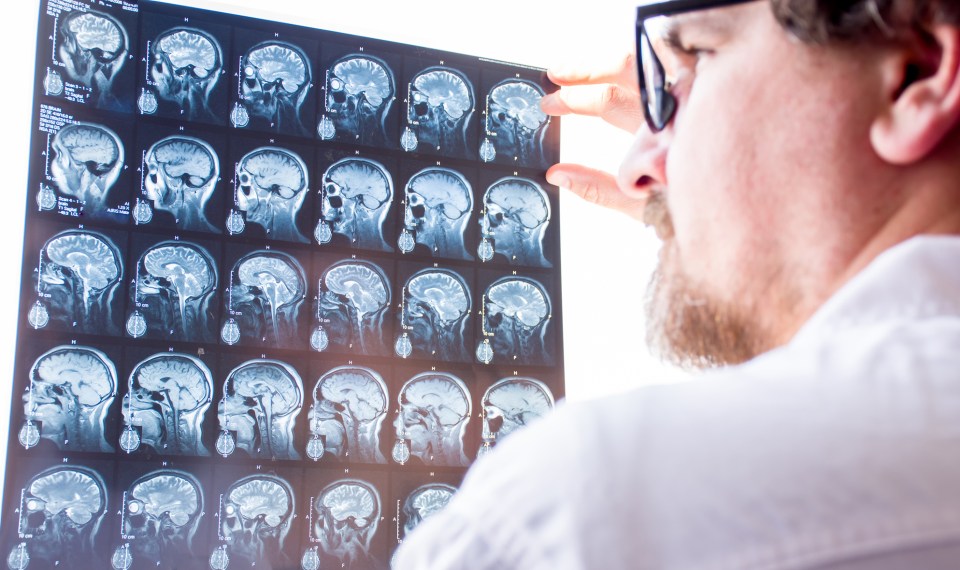Multiple Sclerosis (MS) is a chronic, often progressive and debilitating disease that affects over a million Americans.
Typically, management includes comprehensive medical and pharmacologic regimen and sometimes, physical and occupational therapy. Depending on the severity of symptoms, inpatient rehabilitation can help patients with MS build strength and remain in the home longer, said Dr. Scott Bleakley, director of therapy at Encompass Health Rehabilitation Hospital of Sewickley in Pennsylvania.
During inpatient rehabilitation, patients participate in a minimum of three hours of therapy, five days a week, with a combination of physical, occupational and speech therapy. Historically some healthcare providers were concerned that intense rehabilitation might increase the risk of exacerbating the disease process. Bleakley said current research as well as his experience has shown that if managed by an experienced team, rehabilitation can be highly beneficial for people with MS without the negative side effects that were at one time associated with it. Bleakley said acute rehabilitation can be a safe setting where the patient can build their strength back up and regain some of their independence.
“The challenge we have is that some hospitals look at the patient and see that they’re not able to stand or walk, so they can’t participate in three hours of therapy,” he said. “They have complex needs, but our programs can be adjusted to meet those needs; they’re tailored to the patient’s specific needs.”
What is MS?
MS is a chronic disease that impacts the central nervous system, disrupting the flow of information in the brain, according to the National Multiple Sclerosis Society.
While no two patient’s symptoms are the same, the most common ones include:
- Fatigue
- Difficulty walking and poor coordination
- Numbness in the face or other parts of the body
- Weakness
- Muscle spasms
- Blurred vision
- Vertigo and dizziness
What are the different types of MS?
There are four types of MS, each affecting the body differently overtime. They are:
- Relapsing-Remitting MS (RRMS). This is the most common form of the disease. It’s characterized with temporary relapses followed by periods of remission. An MS relapse, or flare up, can cause a range of symptoms from severe fatigue to loss of balance.
- Secondary-Progressive MS (SPMS). Symptoms worsen more steadily overtime with or without relapses.
- Primary-Progressive MS (PPMS): Symptoms worsen over time without periods of relapse and remission.
- Progressive-Relapsing MS (PRMS): Symptoms steadily worsen with relapses but no remissions.
How inpatient rehabilitation can help MS patients
The goals for rehabilitation are highly individualized and depend on the individual needs of the patient and their caregivers. Following a detailed assessment of the patient, the patient and rehabilitation team develop a plan of care tailored to meet those goals and the current state of the disease. Depending on the goals, the treatment plan can consist of a mix of physical therapy, occupational therapy and speech therapy.
Physical therapy treatments may include exercise, endurance training, gait training, balance and education. One unique tool for improving gait (walking) is the Vector overhead support system. On the Vector, the patient is partially suspended and walks along a track without the risk of falling, Bleakley said. Occupational therapists often focus on improving self-care as well as alternative ways to return to independence and resume previous roles in and out of the home. Activities of Daily Living (ADLs) are a powerful tool occupational therapists use to reinforce skills and teach new ones.
Similar to exercising a muscle, speech therapy engages the brain in a similar way and is a great form of mental exercise as, well. Speech therapists work to improve cognitive skills or teach adaptive techniques, again, focused on meeting the patient’s rehabilitation goals.
As the clinicians focus on building the patient’s strength and the ability to perform everyday tasks, their case manager is working to identify tools and programs in the community to assist the patient after they leave the hospital.
“Our goal is to return people to their community, stronger, more independent and equipped to stay that way” Bleakley said.
The content of this site is for informational purposes only and should not be taken as professional medical advice. Always seek the advice of your physician or other qualified healthcare provider with any questions you may have regarding any medical conditions or treatments.



